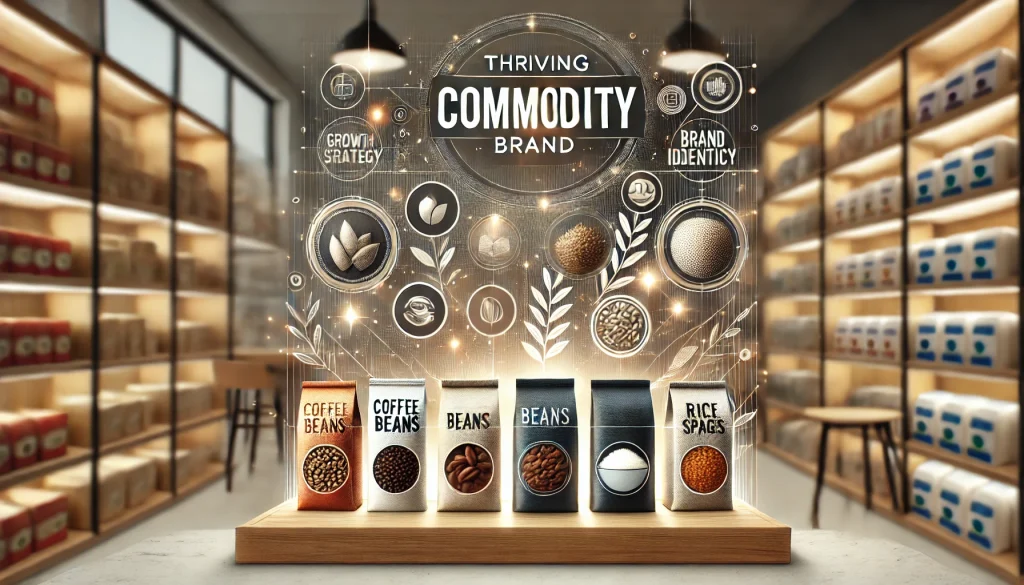The commodity business is a high-risk and volatile field, but with the right strategies, even small entrepreneurs can build successful, sustainable brands. In this article, we will explore key lessons and strategies for entrepreneurs looking to enter or grow their presence in the commodity market. These insights can be particularly useful for Australian businesses, where precision and sustainability in operations are valued.
Embrace Humility and Flexibility
The commodity business is highly unpredictable. Entrepreneurs who achieve initial success may fall into the trap of believing they control the market. This attitude can lead to overconfidence and poor decision-making, which can have disastrous consequences. No matter how successful you are, remember that market dynamics are often beyond your control. The key to longevity in this business is humility and flexibility.
Adopt the 80:20 Hedge Strategy
One effective way to manage risk in the commodity business is to follow the 80:20 rule:
- Hedge (close position) on 80% of your commodity to minimise risk.
- Play (open position) on 20% to take advantage of market fluctuations.
For example, if you are trading 100 tonnes of sugarcane, hedge 80 tonnes through commodity exchanges like the Australian Securities Exchange (ASX), and keep 20 tonnes open. This strategy allows you to capture market benefits if the price rises, while securing the majority of your assets.
Understand and Mitigate Risks
Commodity traders face several risks, and understanding them is crucial for long-term success. Here are some common risks:
- Political Risk: Changes in government policy can affect commodity pricing and supply chains.
- Currency Risk: Fluctuations between the Australian Dollar (AUD) and other currencies can impact import/export businesses.
- Counterparty Risk: Dealing with unreliable suppliers or buyers can jeopardise your transactions.
- Pandemic Risk: COVID-19 affected global supply chains and commodity markets. Entrepreneurs must remain vigilant for similar disruptions.
To manage these risks effectively:
- Stay informed by reading reputable business newspapers and publications, such as The Australian Financial Review.
- Conduct statistical analysis of demand and supply trends for your specific commodity.
- Be proactive in managing external factors that could impact your business.
Monitor Supply and Demand
In any commodity business, monitoring supply and demand is essential. For instance, if you trade sugar, you should assess production levels, consumer demand, and any factors affecting supply (such as adverse weather or new regulations). This knowledge will help you predict whether prices will rise or fall and allow you to adjust your strategy accordingly.
Plan for Financial Resilience
Losses are inevitable in the commodity business. However, you should never risk more than you can afford to lose. Assess your capacity to absorb financial setbacks without jeopardising your business. For example, if you can afford to lose AUD 1 million, limit your risk to that amount to ensure your company’s survival.
Define and Stick to Stop-Loss Points
Setting a clear stop-loss threshold is critical to avoid further losses. A stop-loss is a predetermined point at which you exit a trade to prevent further damage.
For instance, if you purchased sugar for AUD 100 per unit, and the price drops to AUD 80, do not cling to the hope of recovery. Exit the market at that price to limit your losses. Defining a stop-loss ensures that you maintain discipline in volatile markets, preventing the complete erosion of capital.
Achieve High Returns in a Low-Margin Sector
The commodity business is often viewed as a low-margin sector, but high returns can still be achieved by rotating capital multiple times within a year.
For example, if you invest AUD 10,000 in a commodity business and rotate that amount 12 times in a year, your overall return can far exceed the typical margin from a single investment cycle. The key is to maintain efficiency in operations and maximise the turnover rate.
Focus on Branding
One of the most powerful ways to differentiate your business in a competitive commodity market is by building a brand. Over time, even seemingly generic commodities like sugar or edible oil have evolved into branded products with strong consumer loyalty.
In Australia, for example, consumers are increasingly moving towards branded products, recognising the reliability and value they offer. This shift presents an excellent opportunity for businesses to establish themselves as trusted names in the market.
Strategies for Branding
Building a brand takes time, but here are some strategies to help you get started:
- Advertising: Promote your brand across various media to raise awareness.
- Distribution Setup: Establish a strong, scalable distribution network to make your product easily accessible.
- Consumer Education: Educate customers about the benefits of your product over competitors.
- Effective Communication: Ensure consistent messaging that aligns with your brand values.
The benefits of branding include:
- A sustainable business model.
- Value addition to your commodity, allowing you to charge premium prices.
- Better market recognition, leading to customer loyalty.
Build a Distribution Network
While branding is essential, distribution is just as critical. Initially, focus on creating a local or regional network rather than spreading yourself too thin with a nationwide effort. For instance, start by servicing your local district, expand to the state level, and eventually build a national presence. By taking a phased approach, you reduce overhead costs while ensuring steady growth.
Case Study: Branding Sugarcane
One of the most promising commodities is sugarcane, which offers significant opportunities for branding. In Australia, sugarcane is used to produce a variety of products including sugar, ethanol, and bagasse (used in energy production). The versatility of sugarcane makes it a valuable commodity, and branding it can lead to long-term success.
Sugarcane is a highly profitable commodity due to its ability to produce multiple by-products. For example, ethanol derived from sugarcane is increasingly used in fuel blending, making it an essential resource for renewable energy.
Conclusion
Building a brand in the commodity business requires discipline, strategic risk management, and a focus on long-term growth. By staying informed, managing risks, rotating capital efficiently, and investing in branding, entrepreneurs can thrive in this challenging sector.
